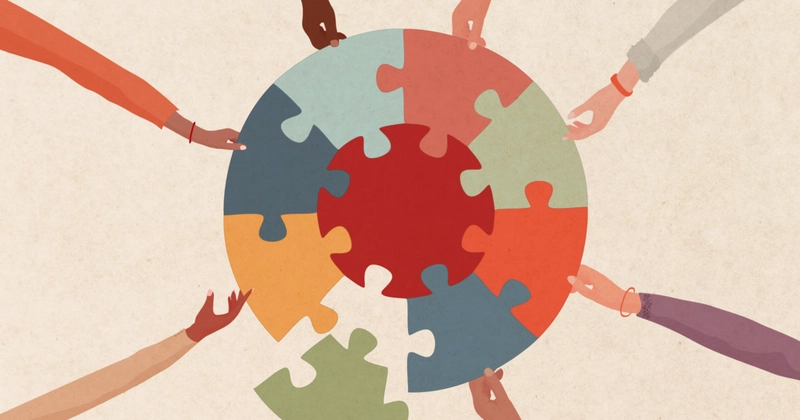Agency work feels intense. Projects move quick. Clients demand more. Deadlines never wait. Teams feel pressure from all sides. Productivity drops. Profit margins shrink.
Why does this happen so often?
Across 100 agency audits, three collaboration mistakes stood out. These mistakes are not complex, but they are costly. I watched teams waste twelve hours weekly on fixing communication breakdowns.
I saw missed deadlines through schedules, forcing agencies to rework whole projects. The cost? An average of $50,000 each year, this is average number-lost to inefficiencies, project delays, and tired teams.
This is a practical guide for agency professionals. If you want your team to get more done, spot these mistakes early. Learn how to fix them using clear systems, the right tools, and proper team habits. Productivity starts with real collaboration, not just working harder.
Why Collaboration Fails in Agencies
- 63% of employees say real collaboration sparks innovation and improves job performance.
- 64% lose up to six hours weekly to inefficiencies, unclear roles, and endless feedback loops.
- 28% of missed deadlines come from miscommunication, not skill.
- Remote teams cite isolation and lack of transparency as top challenges.
Agencies move fast. When teams don’t connect well, missed details and hidden tasks ruin momentum. Most issues are not technical, they start with workflow habits and get worse without proper systems.
Mistake 1: Missing or Messy Task Dependencies
Why Does This Happen?
Tasks in agencies often depend on one another. Developers wait for designers. Writers wait for client approval. But agencies rarely map these dependencies. Without a clear picture, everything feels urgent. Teams make do with guesswork. Projects stall.
Real Example
A web development agency jumped into a campaign with no task map. Design ran late, so development started with placeholder assets. Midway, the real designs arrived. Developers then refactored four modules. This rework cost 40 extra hours. Delays pushed final delivery back by two weeks. The client dropped follow-up work.
What Goes Wrong
- No list of which tasks rely on others
- Teams work in silos, missing key triggers
- No documentation, so the same delays repeat
How to Fix It
- Write each task. Connect it to what it needs to start.
- Use a table or project board. For each card, note: “Built after X is approved.”
- Review dependencies before every sprint.
Tools and Practices:
- Kanban boards (Trello,Teamcamp, Jira)
- Timelines with task dependencies
- RACI matrices to clarify ownership
Action Steps for Developers:
- Always ask: What must finish before I start?
- Post dependencies in your team’s main channel.
- List blockers during daily standup to prompt teammates early.
Mistake 2: Scattered or Ineffective Communication Protocols
Why Does This Happen?
Most agencies use five tools at once. Slack, email, WhatsApp, Zoom, and project comments. Important details get stuck in someone’s inbox or buried in chat threads. One change slips, and people build on old information.
Real Example
A 15-person agency lost $20,000 on one project. The client emailed new requirements. Only the project manager knew. The rest kept building the old version. Double work, double stress, one angry client.
The Core Problem
- No single source of truth. Teams keep personal notes.
- Clients and teams communicate in different channels.
- Meeting notes are not shared or linked to tasks.
How to Fix It
- Always connect conversations to a specific task or project.
- Pick one main platform where all updates go. Everyone knows where to look.
- Use team channels, not private messages, for project details.
Teamcamp’s Team Collaboration Feature
Real collaboration starts with proper communication. Tools like Teamcamp create a single space for all team chat, file sharing, and feedback. Each project has its own discussion stream. Teams know where to find updates. No one is left guessing what changed.
Explore How Team collobration feature help you to communicate better
With Teamcamp:
- Developers see all team messages in one place.
- Clients can join and follow progress without private backchannels.
- Files, comments,Add links of documents and feedback connect directly to project cards.
Action Steps:
- Set a rule: all project decisions get posted to the shared workspace.
- Keep discussions focused. Thread replies under each task.
- Use @mentions to loop in people only when needed.
Mistake 3: Manual Workflow Management and Lack of Automation
Why Does This Happen?
Agencies do the same approvals and status updates over and over. Teams add reminders in Google Sheets. Status meetings run long. No one knows who is waiting on whom. Manual systems hide small mistakes until they snowball.
Real Example
A creative agency kept task lists in shared docs. At month-end, two designers worked the same client project, each using different brand guidelines. The manager spent eight hours merging files and updating the client. Simple automation would have flagged the double booking.
The Cost
- 33 hours spent weekly on manual updates and rework
- Lost time means less creative work and lower billables
- High stress, missed revenue, low morale
How to Fix It
- Automate recurring tasks: Set triggers, assign when prerequisites are done.
- Use notifications when tasks move status.
- Replace status meetings with live dashboards from your project tool.
- Find tools with integrations that update everyone automatically.
Actionable Tools:
- Zapier (for connecting apps and automating handoffs)
- n8n, Make, or similar automation platforms
- Use Teamcamp Built-in notifications in project management tools
Practical Tips:
- Identify repetitive process. Automate status reporting.
- Use if-then rules for approvals: “If draft is approved, assign final design.”
- Reserve meetings for blockers that cannot be solved async.
Key Trends and Agency Insights for 2025
- 32% of agencies say overwork comes from project mismanagement, not lack of effort.
- 55% cite client delays as the main barrier to finishing on time.
- Scope creep and vague requirements create $1.9 trillion in lost productivity annually.
- Agencies with clear communication and visible workflows see a 31% profit boost.
- 41% struggle more with cross-team collaboration than same-team work.
Summary Table: The Three Costly Collaboration Mistakes
| Mistake | Impact | Developer Tip | Sample Tool/Method |
|---|---|---|---|
| No task dependency map | Delays, rework, missed deadlines | Map dependencies, update daily | Kanban boards, RACI |
| Scattered communication | Info silos, rework, project confusion | Centralize chat, link updates | Teamcamp, Slack |
| Manual workflow process | Time loss, stress, duplicate efforts | Automate handoffs and reports | Zapier, n8n, Teamcamp* |
- Teamcamp for communication and Team colloabration. Use external tools for automation as needed.
Real-World, Developer-Friendly Solutions
- Document everything in one platform. Stakeholders know where to look.
- Review dependencies before each sprint. Fix blockers early.
- Keep meetings focused. Each meeting must have an agenda and action items.
- Move regular updates to async. Record Loom videos or publish written standups.
- Automate low-value tasks. Free your team for real problem-solving.
Features to Look For in a Team Collaboration Tool
- Shared workspaces for conversations and files
- Easy onboarding for clients and external partners
- @mentions and threaded discussions
- Mobile and desktop access
- Searchable history for all team discussions
Teamcamp covers communication and real-time discussion needs. It is clean, accessible, and keeps all project talk in one place.
Explore How Integrated Messaging feature help you to communicate better
Conclusion
Agencies do not lose money because of the tools. They lose money because teams fail to connect actions and people clearly. No one likes repeating themselves. No one enjoys fixing the same mistake three times.
If your agency struggles with project reruns, missed deadlines, and tired teams, start with how you collaborate. Map dependencies. Build protocols for communicating. Automate or document anything that is repeated.
Want a single place for all project chats, decisions, and files? Explore Teamcamp for your next project. Teams work better when everyone knows where to find answers, what to do next, and who to ask.
Start fixing your agency’s biggest productivity drag today. Collaboration is not just a buzzword—it is your next business advantage.








